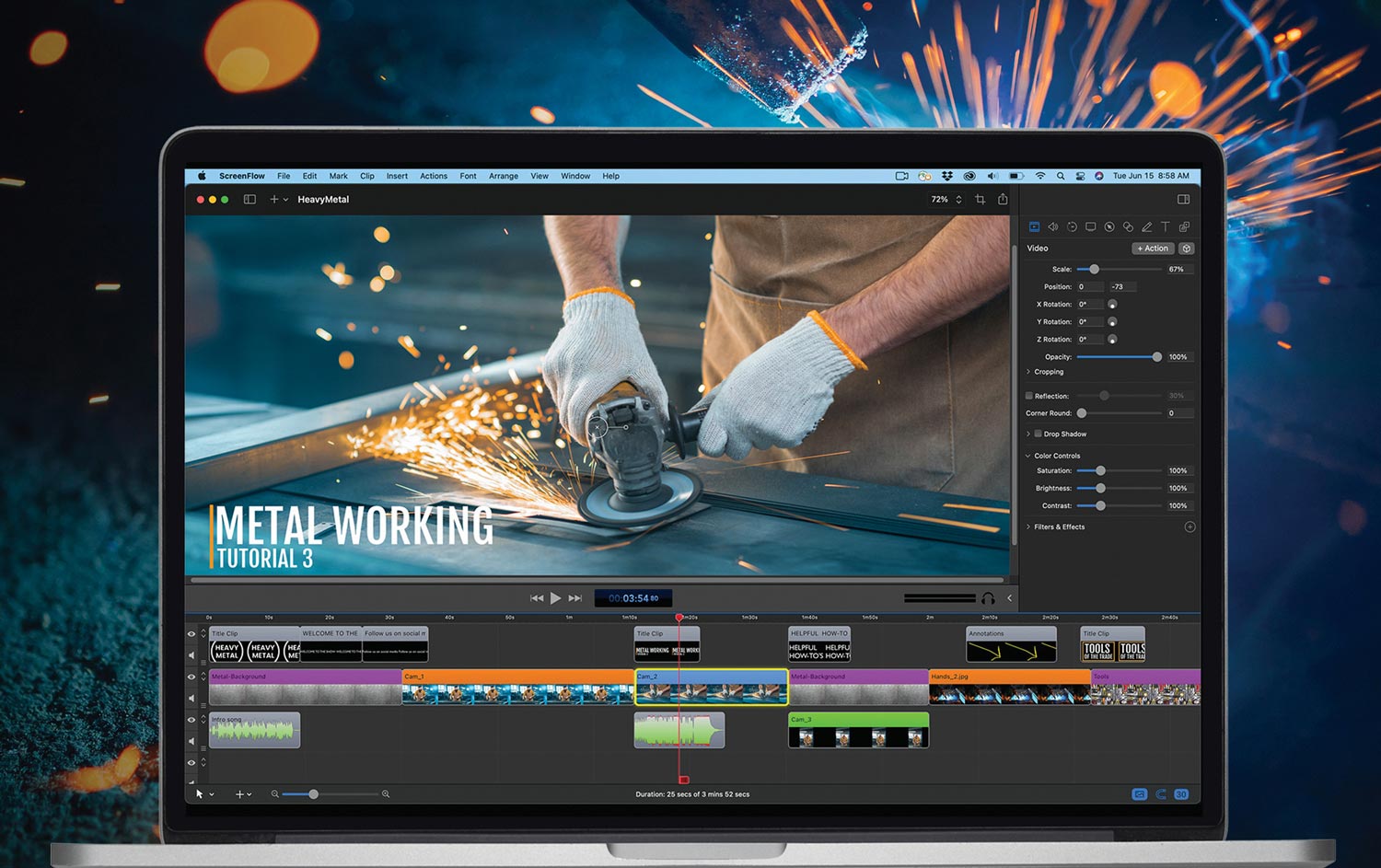Content, Distribution,
and Ground Squirrels
his may not come as a shock to you unless you live under a rock, but video is everywhere— YouTube, Facebook Live, TikTok, Netflix, Hulu, etc., etc., etc. Video is, of course, used to entertain, educate, and eradicate—sorry, I couldn’t resist the alliteration because as I write this article I am also trying to eradicate some ground squirrels. Of course, video consumption has its roots in video creation followed by video distribution—mainly streaming. Hang on to this thought because it’s the premise for my diatribe.
Scour the internet and you can’t help but find statistics that validate what you (and I) are doing, namely, turning to video when we need something. Why is this? Well, it comes down to biology. Ninety percent of information transmitted to the brain is visual, and the human brain processes images 60,000 times faster than text. Wow, that’s a heck of a statistic! But not so fast… What I find interesting is that, while this stat is quoted all over the internet, no one can actually find the true source of the information. But it sounds great, doesn’t it, and it is probably based in reality. And truly, we can all believe it because when we need to do something, like eradicate ground squirrels, we turn to YouTube.
Statistics that show that people who create content believe that video is more effective than print. Primarily this is just intuitive because every day, it seems, everyone is turning to watch video for something.
One last statistic you can easily find on the internet is that, if your video sucks, no one will watch it… or at least they will watch it until they say, “Wow, this sucks, I’m outta here.” Will they then return to that same company or creator if the video they just watched sucked? Not likely. Hence, it’s pretty important that when you create and stream video you do a good job.

Content/Value/Quality
This can be applied to anything we create, be it live or video on demand (VOD). I feel strongly that there’s a reason to look at things through the lens of our viewers; demographics are critical for data consumption. By understanding our audience, we can tailor our content to them. As a grandfather of 11 younglings, I’m fascinated by the four-year-old screaming at her mother for the tablet to watch Wild Kratts videos while she’s cruising through Instagram posts. I’m so fascinated, in fact, that I leave the room and let her deal with it (“Hey, I paid my dues raising you, it’s your turn now”). But the point is that commercial content creators recognize that the Wild Kratts videos are targeting a specific demographic and that the content for them is really good. Okay, I must confess, Chris and Martin Kratt are pretty cool.
Let’s turn this to you and your business. You’ve got a great new product called a “retro encabulator.” You think, “Let’s do a webinar! It’ll be a smashing success!” So you grab your product manager, stick him in front of a camera and he starts to blather on and on about the great bits and bobs of the new “retro encabulator.” Check out this awesome video on YouTube: https://www.youtube.com/watch?v=RXJKdh1KZ0w.
What happens with the average webinar is that a lot of folks sign up, only one-third show up, and the majority of them drop out before you even get to the bobs. My recommendation? Please, please, please, focus on content. Focus on what you want your audience to remember.
Value
My point here is that the video you create needs to have value to your viewer. If your product manager drones on and on about the bits and bobs in your new “retro encabulator,” you may have an audience! The key is that the video has value to the viewer. Much like “content is king,” the value to the viewer needs to be understood. What are they going to get out of it? If I tune into a dude who tells me he can eradicate my ground squirrel problem, he better get to the point, and really quick, because I’ve got CrossFit videos to watch.
My point here is that production, the process of creating the video, doesn’t have to cost an arm and a leg. It can be fun but needs to be done well to enhance the content. I encourage everyone to create a video using some inexpensive, even free, tools. Make a video of how-to BBQ Tri-Tip and send it to me. I’ll watch it and give you a critique. You’ll be surprised at how much you’ll appreciate your 13-year-old granddaughter’s video-creation prowess let alone that videographer you have on staff.
Now there are only two types of video: live and video on demand. After a live video is aired, it becomes VOD, thus one could argue that VOD is the only video, but, really, do you want to watch the Super Bowl live or on demand? So live definitely has a place in this world. Consider this as you develop your video content and distribution strategy.
You have many choices when it comes to “what the heck do I do with my video now that it’s created?” If you put it up on a public forum, such as YouTube, you get the benefit of it being free. But then you’re subject to YouTube’s branding and the fact that they can, and often do, place commercials in or over the content. A paid platform is best because you control the branding and customer experience. If you want to ensure that your content won’t get ripped off, make sure you have security, registration, etc. If you want engagement, your platform can include polls, live Q&A, links to datasheets, and more. Anything to keep the viewer engaged!
There’s so much to talk about in this area, but I’ll stop now. I need to go check my traps.

Murray holds a degree in industrial engineering from Cal Poly, San Luis Obispo. Previously, he has held engineering, marketing, management, and executive positions at Grass Valley Group, Scitex Digital Video and Miranda Technologies.